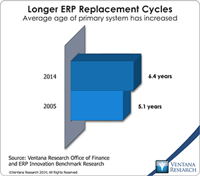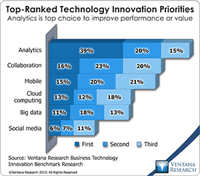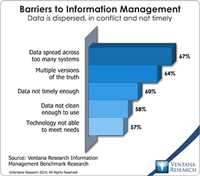Like other vendors of cloud-based ERP software, NetSuite offers the key benefits of software as a service (SaaS): a smaller upfront investment, faster time to value and potentially lower operating costs. Beyond that NetSuite’s essential point of competitive differentiation from is broad functionality beyond financial management, including capabilities for customer relationship management (CRM), professional services automation (PSA) and human capital management (HCM). These components make it...
Read More
Topics:
Microsoft,
Mobile,
SaaS,
Sales,
Customer Experience,
ERP,
HCM,
Human Capital,
Office of Finance,
Operational Performance Management (OPM),
communications,
Dynamics AX,
Dynamics GP,
Dynamics NAV Dynamics SL,
PSA,
Sage Software,
UI,
Unit4,
Analytics,
Business Analytics,
Cloud Computing,
Business Performance Management (BPM),
CFO,
CRM,
Customer Performance Management (CPM),
Financial Performance Management (FPM),
FinancialForce,
HR,
Infor,
Sales Performance Management (SPM),
Supply Chain Performance Management (SCPM),
Workforce Performance Management (WPM),
Social,
Financial Performance Management,
FPM,
Plex,
Professional Services Automation,
Workday Collaboration
Epicor used its recent user group conference to explain its strategic direction and product roadmap. The company is the result of multiple mergers of business software corporations over the past 15 years; its target customers are midsize companies and midsize divisions of larger organizations. Its most significant products are Epicor (ERP software aimed mainly at manufacturing and distribution companies) and Activant Solutions (software for small and midsize retailers, including a point-of-sale...
Read More
Topics:
Microsoft,
Mobile,
SaaS,
Sales,
Customer Experience,
ERP,
HCM,
Human Capital,
Office of Finance,
Operational Performance Management (OPM),
communications,
Dynamics AX,
Dynamics GP,
Dynamics NAV Dynamics SL,
Epicor,
Sage Software,
UI,
Unit4,
Analytics,
Business Analytics,
Cloud Computing,
Collaboration,
Business Performance Management (BPM),
CFO,
Customer Performance Management (CPM),
Financial Performance Management (FPM),
FinancialForce,
HR,
Infor,
Supply Chain Performance Management (SCPM),
Workday,
Workforce Performance Management (WPM),
Social,
Financial Performance Management,
FPM,
Plex
From my perspective, Infor’s strategy to accelerate revenue growth is to offer companies more innovation and a lower and more predictable cost of ownership than its rivals in the business software market; its products include the major categories of ERP, human resources and financial performance management. It aims to innovate by focusing on improving the user experience and to lower costs by redesigning its software architecture. The innovation stems from a fresh approach to designing...
Read More
Topics:
Microsoft,
Mobile,
SaaS,
Sales,
Customer Experience,
ERP,
HCM,
Human Capital,
Office of Finance,
Operational Performance Management (OPM),
Dynamics AX,
Dynamics GP,
Dynamics NAV Dynamics SL,
Sage Software,
UI,
Unit4,
Analytics,
Business Analytics,
Business Collaboration,
Cloud Computing,
Business Performance Management (BPM),
CFO,
Customer Performance Management (CPM),
Financial Performance Management (FPM),
FinancialForce,
HR,
Infor,
Information Management (IM),
Sales Performance Management (SPM),
Supply Chain Performance Management (SCPM),
Workday,
Workforce Performance Management (WPM),
Financial Performance Management,
FPM,
Plex













